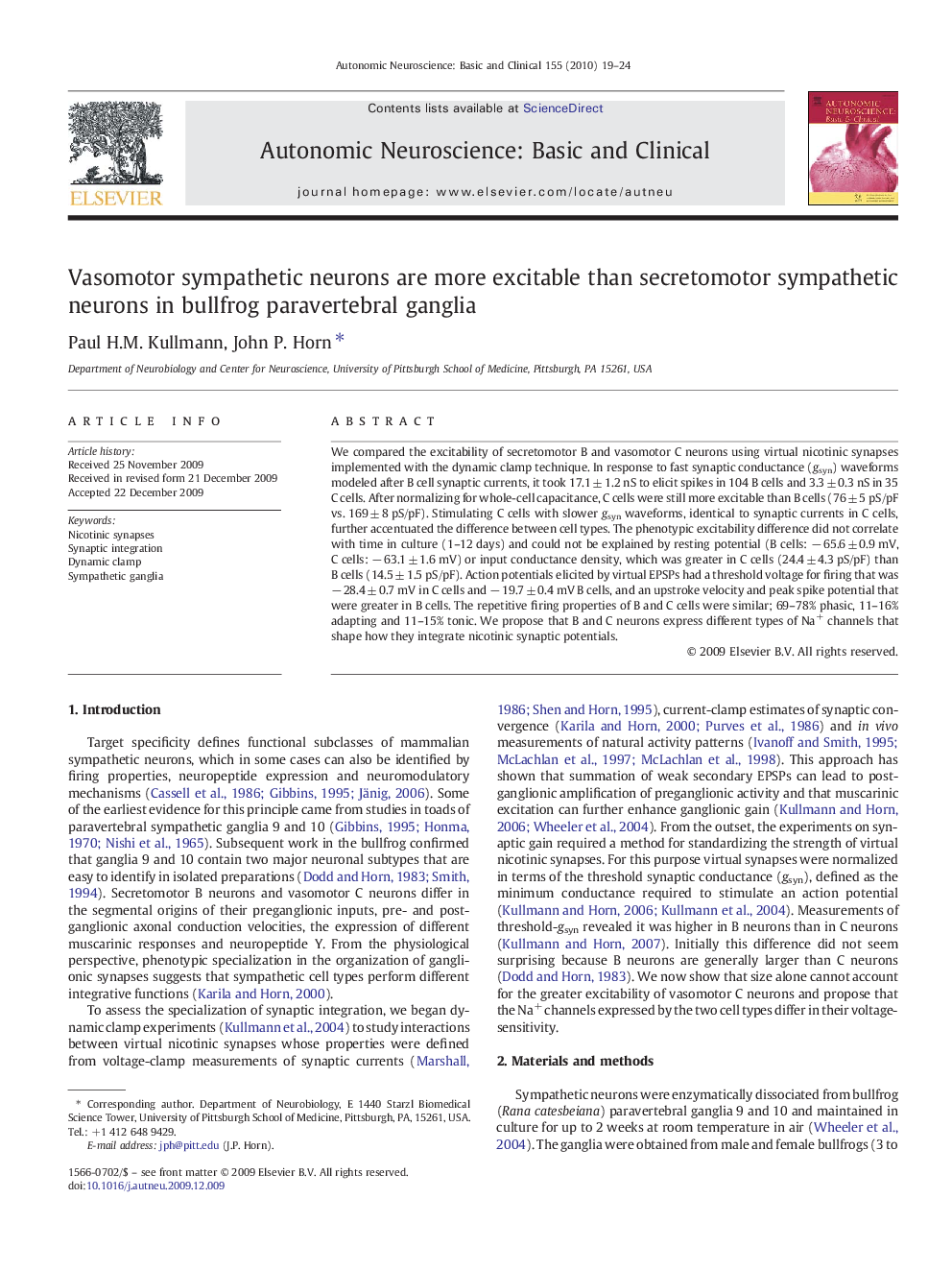| Article ID | Journal | Published Year | Pages | File Type |
|---|---|---|---|---|
| 3035114 | Autonomic Neuroscience | 2010 | 6 Pages |
We compared the excitability of secretomotor B and vasomotor C neurons using virtual nicotinic synapses implemented with the dynamic clamp technique. In response to fast synaptic conductance (gsyn) waveforms modeled after B cell synaptic currents, it took 17.1 ± 1.2 nS to elicit spikes in 104 B cells and 3.3 ± 0.3 nS in 35 C cells. After normalizing for whole-cell capacitance, C cells were still more excitable than B cells (76 ± 5 pS/pF vs. 169 ± 8 pS/pF). Stimulating C cells with slower gsyn waveforms, identical to synaptic currents in C cells, further accentuated the difference between cell types. The phenotypic excitability difference did not correlate with time in culture (1–12 days) and could not be explained by resting potential (B cells: − 65.6 ± 0.9 mV, C cells: − 63.1 ± 1.6 mV) or input conductance density, which was greater in C cells (24.4 ± 4.3 pS/pF) than B cells (14.5 ± 1.5 pS/pF). Action potentials elicited by virtual EPSPs had a threshold voltage for firing that was − 28.4 ± 0.7 mV in C cells and − 19.7 ± 0.4 mV B cells, and an upstroke velocity and peak spike potential that were greater in B cells. The repetitive firing properties of B and C cells were similar; 69–78% phasic, 11–16% adapting and 11–15% tonic. We propose that B and C neurons express different types of Na+ channels that shape how they integrate nicotinic synaptic potentials.
